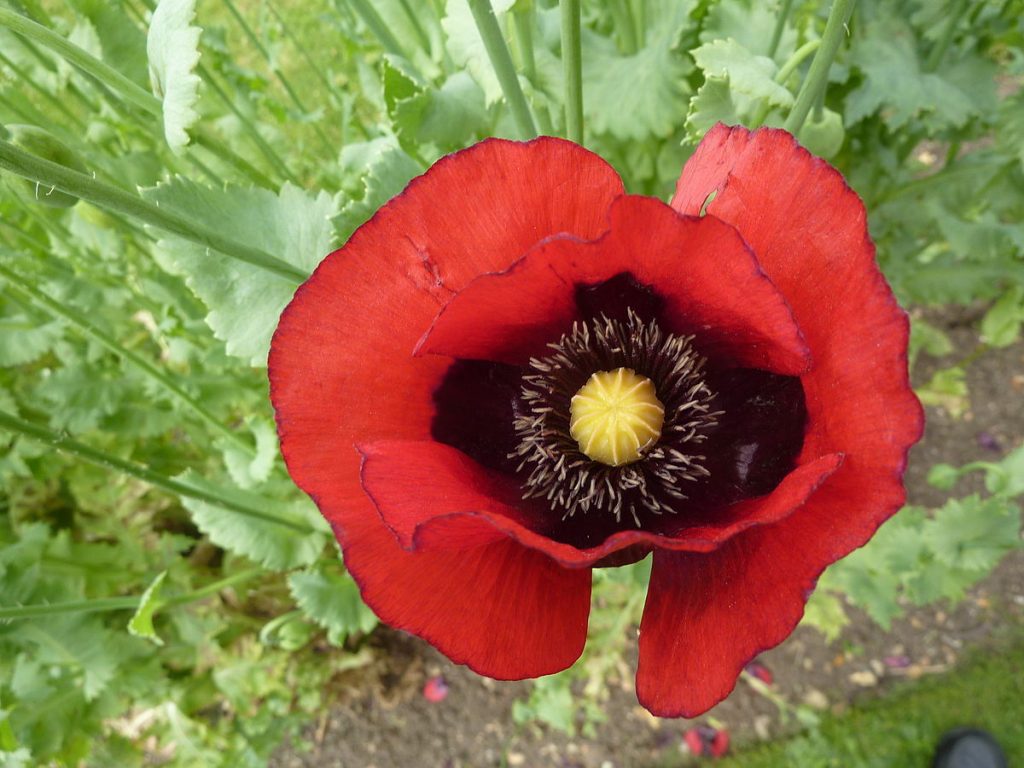
A native of Greece and western Asia, the opium poppy is the oldest poppy in cultivation, dating back to ancient Sumerian times, 4000 BC. The ancient Minoans, 2000-1450 BC, made opium from the sap of its seed capsules. It is a member of the poppy family, Papaverceae, that also includes bleeding heart and corydalis. Growing up to 3′ tall, the plant has blue-gray lobed leaves that clasp the unbranched blue-green stem. Both stems and leaves are glaucous and have a light distribution of coarse hairs. In spring, nodding buds open to 4″ wide flowers with 4 petaled flowers 4″ wide sometimes with dark markings on the base. The species is scarlet but breeding has created white, pink, and purple cultivars. The flowers may be one of two forms: carnation-flowered with fringed petals, or peony-flowered that look like double peonies. Plants readily self-seed. The petals drop quickly when cut but the round seed capsules are very attractive and dry well. All parts of the plant exude white latex when cut. Today, opium poppy is grown as an ornamental and a source of opium; and the seeds are used in cooking. The genus name, Papaver, is the ancient Latin name for the plant. The specific epithet, somnifera, comes from the Latin words somnus meaning sleep, and fero meaning bear and refers to the sleep inducing properties of the plant. Magnus Manske Wikimedia Commons

Type: Annual
Bloom: Large white, pink, red, or purple flowers emerge from nodding buds in spring and are borne singly on tall stems.
Size: 2-3’ H x 2’
Light: Full sun
Hardiness: NA/ Annual
Soil: Fertile, moderately moist, well-drained
Care: Staking may be necessary.
Pests and Diseases: Susceptible to root rot, downy mildew, leaf blight, mosaic virus, flea beetles, root weevil
Propagation: Seed.
Photo Credit Wikipedia